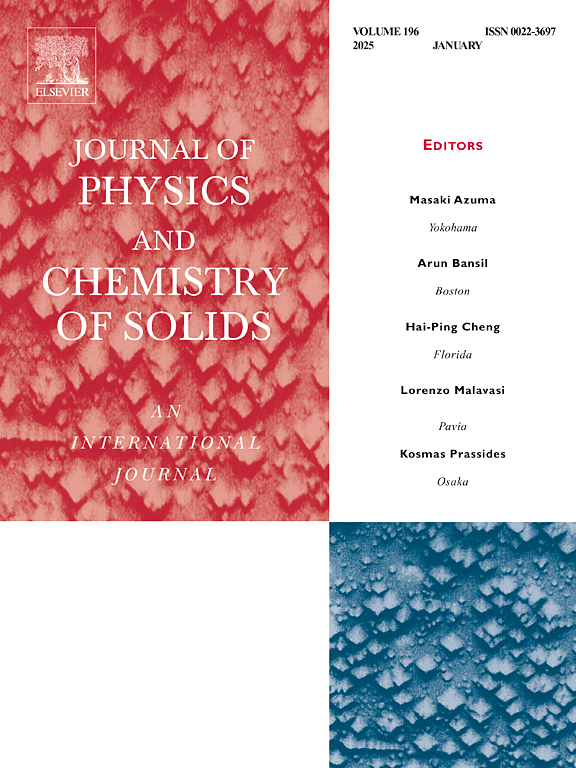Computational strain engineering and Hubbard's effect investigation on Li2CuWX6 (X = Cl, Br) double perovskites: A promising Route to spintronic Innovation
IF 4.3
3区 材料科学
Q2 CHEMISTRY, MULTIDISCIPLINARY
引用次数: 0
Abstract
There are many advantages to spintronics, including higher speeds at lower power consumption, improved robustness, and the potential to ultimately replace conventional electronics. Spintronic devices can benefit greatly from the spin polarization ferromagnetism found in double perovskites (DPs). We used the PBE-sol approximation to figure out the exchange-correlation potential and the mBJ potential and Hubbard U-corrections in order to get a good idea of the electronic band structure (BS) and density of states (DOS). A net effect of spin orbit coupling (SOC) was also kept in consideration for the electronic conduction. Both materials exhibit thermodynamic stability in a cubic structure due to their negative formation energies and no imaginary phonon frequencies or lattice vibrations. We identify ferromagnetic compounds using spin-based energy volume optimization and exchange constant values. It is distinctly observed from 3-d states of tungsten (W) are the primary contributor to the magnetic moment arising from exchange splitting, which in turn causes ferromagnetism. An direct band gap (Eg) was found in both Li2CuWCl6 and Li2CuWBr6, with Eg values of 2.09 eV and 1.53 eV, respectively. We discovered this by analyzing the electronic density of states and band structure (BS). The optical spectra of materials revealed significant UV absorption. Finally, we examined the thermoelectric (TE) characteristics of compounds in the 200–800 K temperature range via BoltzTrap algorithm. The material's thermal conductivity (κe/τ) and electrical conductivity (σ/τ) were included in the transport parameter, which increased with temperature. On the other hand, the power factor (P.F) and Seebeck coefficient (S) decreased with rising temperature. Moreover, Li2CuWCl6 and Li2CuWBr6 both had high figures of merit (ZT) of 0.74 and 0.72, respectively. The optimistic results of this study demonstrate the potential of the materials under discussion in the domains of thermoelectric, optoelectronics, and spintronics.
求助全文
约1分钟内获得全文
求助全文
来源期刊
CiteScore
7.80
自引率
2.50%
发文量
605
审稿时长
40 days
期刊介绍:
The Journal of Physics and Chemistry of Solids is a well-established international medium for publication of archival research in condensed matter and materials sciences. Areas of interest broadly include experimental and theoretical research on electronic, magnetic, spectroscopic and structural properties as well as the statistical mechanics and thermodynamics of materials. The focus is on gaining physical and chemical insight into the properties and potential applications of condensed matter systems.
Within the broad scope of the journal, beyond regular contributions, the editors have identified submissions in the following areas of physics and chemistry of solids to be of special current interest to the journal:
Low-dimensional systems
Exotic states of quantum electron matter including topological phases
Energy conversion and storage
Interfaces, nanoparticles and catalysts.

 求助内容:
求助内容: 应助结果提醒方式:
应助结果提醒方式:


